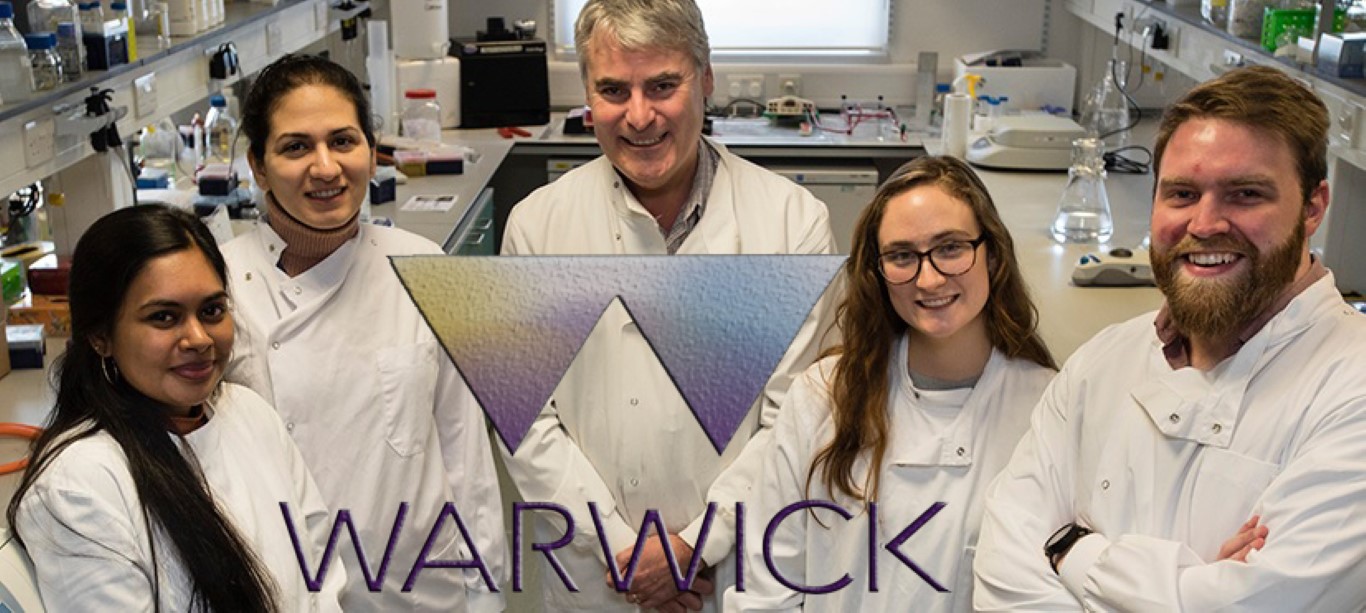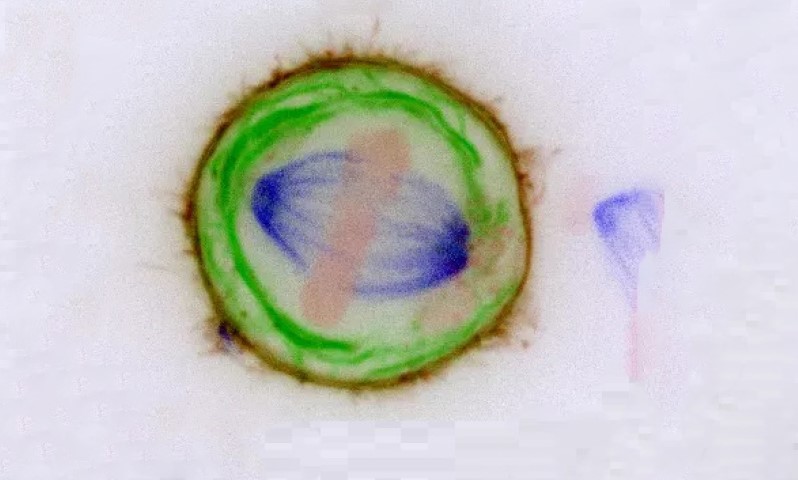The University of Warwick's research gives fresh information on a major cause of cancer growth during cell division (or mitosis), as well as potential treatments for preventing it.
When a cell divides normally, it duplicates each chromosome and divides the copies evenly between the two new cells. The mitotic spindle is a complicated machine in the cell that performs this function.
If something goes wrong at this point, the two new cells will be aneuploid, which means they will not have the correct amount of chromosomes and will share genetic information incorrectly.
During the process of cell division, or mitosis, researchers discovered a key cause of cancer formation. When a cell splits regularly, a copy of each chromosome is created and shared evenly between two daughter cells. The mitotic spindle, marked in blue in the image above, is a sophisticated piece of cellular machinery that distributes the chromosomes, which are highlighted in pink. An mistake in this process might result in aneuploid daughter cells, which have the wrong number of chromosomes. When transferring information, these cells will make mistakes. Cancer cells are aneuploid, and understanding why this happens is crucial to understanding how cancer develops.
Because cancer cells are aneuploid, it's crucial to understand how and why this arises in order to figure out where the sickness comes from.
- Cancer can be triggered by aberrant cell division, which occurs when the two new cells do not share the correct number of chromosomes.
- Cell surgery was utilised to figure out how and why the wrong number of chromosomes are shared during cell division.
- The discovery could be utilised to prevent cancer in the future.
Professor Stephen Royle's research group at Warwick Medical School discovered that some chromosomes can become lost and stuck in a tangle of membranes around the cell's spindle, preventing the chromosomes from being properly shared and leading to cancerous cell division.
Using a procedure known as cell surgery, the scientists were able to pinpoint the cause. The'surgery' was done on living cells by eliminating the tangle of membranes that trap chromosomes, rescuing chromosomes from the spindle, and allowing normal, healthy cell division. For the first time, the researchers were able to show that chromosomes stuck in these membranes are a direct cause of malignant cell development.
In the above fig. The spindle(blue) has shared chromosomes (indicated in pink). Membranes (green) are a risk factor for chromosomal sharing that isn't done correctly.
Stephen Royle,cell biologist, states "Many cell division researchers concentrate on the spindle: how it works and why it makes faults in cancer. We turned the attention on membranes inside dividing cells in this work."
Nuria Ferrandiz, the paper's lead author, explains, "We discovered that chromosomes can become caught in membranes, which is bad news for dividing cells. It has the ability to turn a healthy cell into a cancerous one. It may be possible to treat sickness by preventing this process."
The findings were described in a report published in the Journal of Cell Biology.








0 Comments